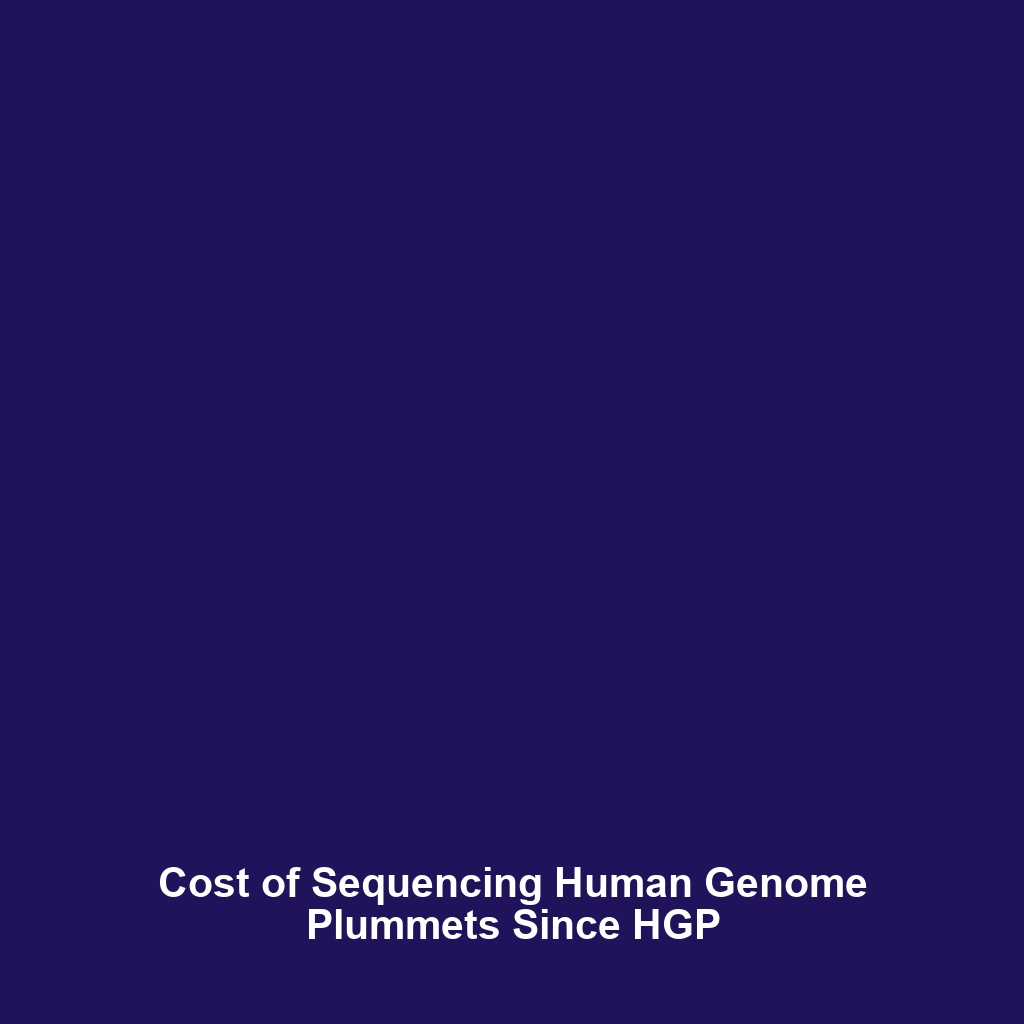Impact on Cost Reduction: Sequencing a Human Genome Now Costs a Fraction of What it Did During the HGP
The sequencing of the human genome has witnessed a remarkable transformation since the completion of the Human Genome Project (HGP) in 2003. Initially, sequencing a human genome cost upwards of $2.7 billion. Today, that cost has plummeted to a mere fraction, enabling broader access to genomic data and revolutionizing personalized medicine. Understanding this cost reduction is pivotal in grasping the wider implications of the HGP on science, healthcare, and society.
Key Concepts
The reduction in the cost of sequencing human genomes can be attributed to several key concepts and advancements:
- Next-Generation Sequencing (NGS) Technology: This innovative technology significantly enhances sequencing speed and throughput, reducing time and costs.
- Computational Advances: Improved algorithms for data analysis have contributed to decreased operational costs.
- Economies of Scale: With increased demand for genomic sequencing, companies can streamline operations, resulting in lower prices.
Applications and Real-World Uses
The affordability of genome sequencing has opened doors to numerous applications:
- Clinical Diagnostics: Whole genome sequencing is now employed to diagnose genetic disorders more effectively.
- Pharmacogenomics: Tailoring medication based on an individual’s genetic makeup has become feasible, improving treatment effectiveness and reducing adverse reactions.
- Public Health Strategies: The lower costs allow for large-scale genomic studies, crucial for understanding disease outbreaks and genetic epidemiology.
Current Challenges
Despite the advances in cost reduction, several challenges persist in the field:
- Data Privacy Concerns: Protecting individual genomic data from misuse remains a critical issue.
- Access Inequality: Not all regions have equal access to genomic sequencing technologies, creating disparities in healthcare.
- Interpreting Variants: Understanding the clinical significance of genetic variants is still a major hurdle in genomic medicine.
Future Research and Innovations
The future of genome sequencing looks promising with ongoing innovations, including:
- Single-Molecule Sequencing: This technology could revolutionize genome assembly and costing further.
- AI in Genomics: Artificial Intelligence is set to enhance genome analysis, making it faster and more cost-effective.
- Broader Genomic Applications: Advancements may lead to more widespread use in agriculture, ancestry research, and beyond.
Conclusion
In conclusion, the dramatic reduction in the cost of sequencing a human genome since the Human Genome Project has significant implications for healthcare, research, and society at large. It has made personalized medicine more attainable and broadened the scope of genomic studies. As we look to the future, addressing the existing challenges and embracing innovations will strengthen the impact of genomics on various fields. For further reading, check out our articles on advancements in genomics and personalized medicine.
